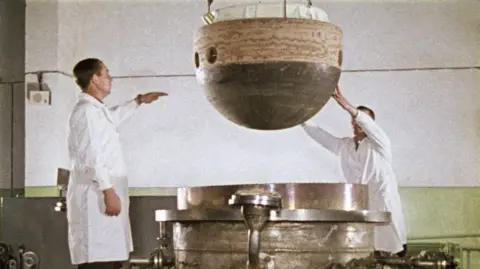Kosmos 482 Soviet Spacecraft: The Fifty-Year Odyssey Ends on Earth
The saga of the Kosmos 482 Soviet spacecraft has finally reached its conclusion after more than fifty years of suspense. Launched during the height of the space race, this Soviet probe embarked on a mission to Venus in 1972. Instead of venturing to its intended destination, however, Kosmos 482 became an enduring resident of Earth's orbit—until its highly anticipated return in 2025.

A Venus Mission That Never Reached Its Target
Kosmos 482 was part of the Soviet Union’s ambitious Venera program, designed to explore the mysteries of Venus. On April 3, 1972, the spacecraft launched from the Baikonur Cosmodrome. However, a rocket malfunction left the probe stranded in an elliptical orbit around Earth, sealing its fate as a piece of space debris rather than a pioneering visitor to another planet.
Despite never reaching Venus, the descent capsule of the Kosmos 482 Soviet spacecraft earned a degree of notoriety. Built to endure the harsh environment of Venus’s atmosphere, it boasted a robust heat shield and reinforced structure that would later become relevant in its accidental journey home.
Fifty Years in Orbit: A Space Debris Survivor
Instead of a short-lived mission, Kosmos 482 circled our planet for more than five decades. Over the years, atmospheric drag gradually slowed the spacecraft, lowering its orbit. Eventually, in May 2025, reports confirmed its reentry into Earth's atmosphere—a moment chronicled by global space agencies and tracked by astronomers around the world.
The European Space Agency (ESA) noted that Kosmos 482 likely survived re-entry due to its durability. According to their official comments, the descent capsule’s advanced heat shield, originally designed to withstand Venus, gave it a better chance of surviving Earth’s atmospheric friction. Nonetheless, much of the spacecraft likely burned up, while remaining fragments probably ended up in uninhabited regions, such as the ocean.
Why Spacewatchers Cared About Kosmos 482
The fate of Kosmos 482 illustrates the evolving challenge of space debris. With tens of thousands of objects orbiting Earth today, concerns over uncontrolled reentries and their potential risks are growing. The dramatic conclusion of Kosmos 482’s odyssey drew renewed attention to this issue.
Photographers and astronomers tracked every phase of Kosmos 482's final orbit, capturing rare images as the probe passed over cities such as Rome. ESA and other agencies emphasize that while the risk of ground impact is extremely low, an increase in orbital clutter raises long-term safety and environmental questions for future missions.
Lessons for the Future of Space Travel
Kosmos 482’s journey from an ill-fated Venus lander to a celebrated relic of the space age highlights both Soviet technological ambition and the enduring legacy of early space exploration. Experts now call for all new spacecraft to have reliable deorbit strategies, as recommended by agencies like the ESA, to ensure safe re-entries and to minimize hazards linked to space debris.
For more detailed coverage on the Kosmos 482 Soviet spacecraft and its dramatic conclusion, you can read:
- Kosmos 482: Soviet-era spacecraft 'likely' to have re-entered Earth's atmosphere — BBC News
- Failed Soviet Venus lander Kosmos 482 crashes to Earth after 53 years in orbit | Space.com
- Kosmos 482 crash — New York Times
Summary
The Kosmos 482 Soviet spacecraft, once aimed at exploring Venus, ultimately became a symbol of human ingenuity, persistence, and the ongoing need to manage our legacy in space. Its return to Earth after more than 50 years invites us to look forward with caution and responsibility, ensuring that our quest for discovery does not come at the expense of our own planet’s safety and environment.